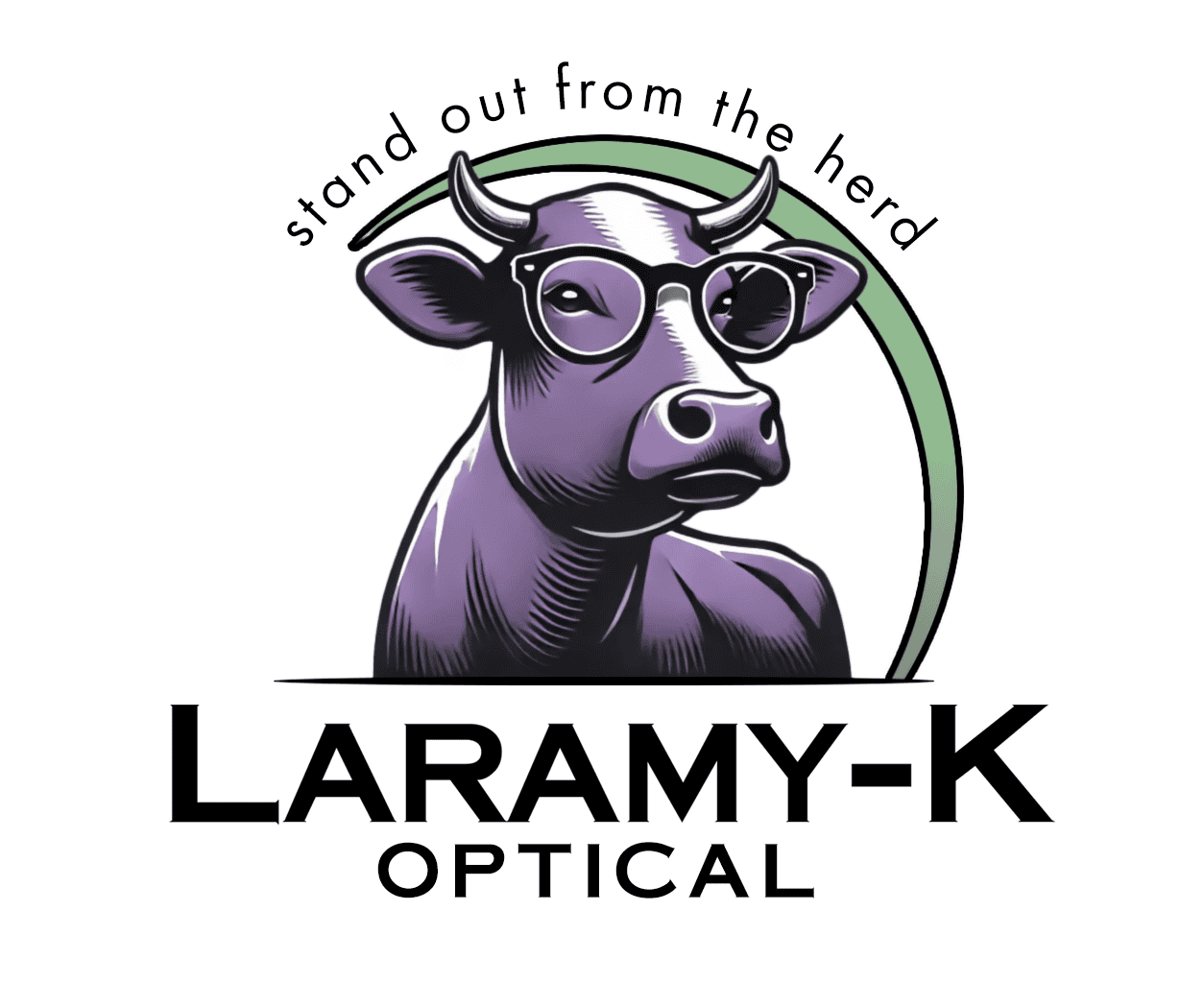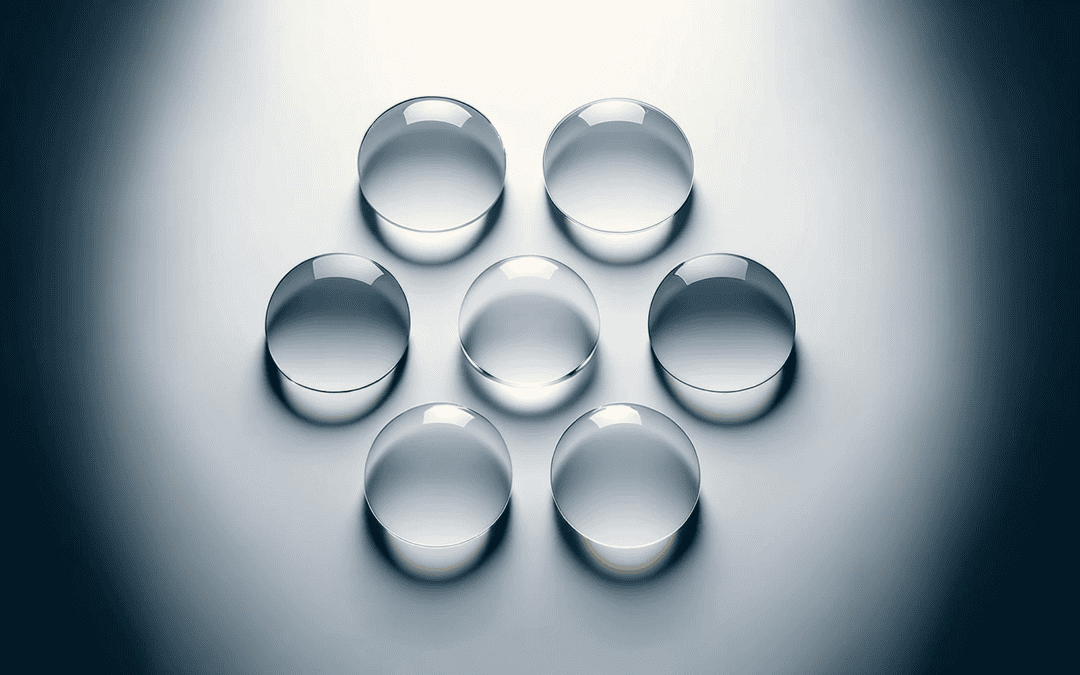The Importance of Selecting the Right Lens Material
When it comes to the perfect pair of eyeglasses, an important factors can be selecting the right lens material. This choice is not just about aesthetics; it can influence comfort, durability, vision quality, and even the overall style. There's a wide array of lens materials available, each offering unique benefits and features. However, this variety also means that making an informed decision can be overwhelming even for opticians. Your optical wholesale laboratory should be a good resource in helping determine the appropriate lens material.
The lens material you choose impacts everything from thickness to weight, to UV protection. Material choice affects scratch and impact resistance, which is especially important for those with active lifestyles or specific vision needs. Finally, the cost varies significantly based on the material chosen.
Properties of Lens Materials
Refractive Index
The refractive index of a lens material indicates how much the material will refract or bend light as it enters the material from air, by comparing the speed of light in a given material to the speed of light in air. The higher the index number of a given material, the more the light will refract as it enters the material. If a material has a greater ability to refract light, less of a curve is required to obtain a specific power, resulting in a thinner lens. Plastic (CR-39) and Crown Glass are considered base index with indices of 1.498 and 1.52 respectively. Materials with an index between 1.53 and 1.57 are sometimes considered mid-index, while 1.58 and greater is considered high-index. More frequently, however, anything over 1.53 is called high-index.
Specific Gravity
Specific gravity describes the density of a lens material by comparing its density to the density of water. The higher the specific gravity of a lens material, the higher the density, and consequently, the heavier a lens of that material will be for a given power and size.
Abbe Value
White light is composed of the visible spectrum of wavelengths each corresponding to a different color. When light enters a prism it is bent toward the base of the prism. Shorter wavelengths (e.g., violet) are bent at a greater angle than longer wavelengths (e.g., red). Since a lens can be likened to two prisms (apex to apex for a minus lens and base to base for a plus lens), light passing through a lens has a tendency to separate into its respective colors as its varying wavelengths are focused at differing points. The tendency to of a material to separate light in this manner is called chromatic aberration and is measured by its Abbe value. The Abbe value of a material is inversely proportional to the chromatic aberration induced as light passes through it. In other words, the higher the abbe value, the lower the amount of chromatic aberration. Generally speaking, the higher the index of a lens material, the higher the chromatic aberration, and the lower the Abbe value.
Reflectance
The reflectance of the material describes the percentage of incident light reflected from a highly polished surface of that material and is calculated from the refractive index of a material. When light hits a lens surface in air normally, the percentage of light reflected at each surface is given by:
R = (n - 1)2/(n + 1)2 * 100%
Thus a material of refractive index 1.5, has a reflectance of
(0.5/2.5)2*100 = 4% per surface
Higher index materials have higher reflectance making surface glare more of an issue and anti-reflective coating even more beneficial.
Transmittance
The transmittance of a lens material describes the amount of light (usually specified for a given waveband) that will pass through that material.
Lens Materials Pros and Cons
Glass
Glass has historically been the material of choice for ophthalmic lenses. Glass is most stable, scratch-resistant, and provides the best optical quality of all lens materials. However, since glass is more brittle than most materials, lenses made of glass must be tempered or heat-treated to give them more strength and make them safer to wear. Glass is available in a number of indices of refraction. As mentioned above, the higher the index, the thinner a lens will be for a given power. However, the specific gravity also increases dramatically with the index making high-index glass lenses much heavier. Chromatic aberration is also more pronounced in high-index glass.
Index: Crown 1.52; High index 1.60, 1.70, 1.80
Pros
Superior optics
Stable material
Scratch resistant
Cons
Does not accept tint
Not impact resistant
Heavy
CR-39
Developed by PPG during WWII, CR-39, also known as plastic or hard resin, serves as a much lighter lens material (approximately 50% lighter) than glass. CR-39, however, is far less scratch-resistant and often must be coated to improve its scratch-resistant characteristics.
Index: 1.498
Pros
Lighter than glass
Readily tintable
Less likely to fog
Cons
Susceptible to scratching (correctable by coating)
Lower index of refraction makes it less suitable for higher powered prescriptions
Polycarbonate
While its optical characteristics are less than ideal, polycarbonate, the same material used for bullet-proof glass, is the most impact-resistant of lens materials. Consequently, polycarbonate is the material of choice for safety and children’s eyewear. With an index of 1.59, polycarbonate also produces thinner, lighter lenses than glass or plastic. These factors along with polycarbonate’s inherent UV protection and pricing make it a popular material.
Index: 1.59
Pros
Thinner and lighter than glass and plastic
Highly impact resistant (used for safety glasses)
Inherent UV protection
Cons
Poor optical quality
Susceptible to scratching (correctable by coating)
Susceptible to stress fractures in drill mounts
Does not readily accept tint
Hi-Index
High index lenses polymers typically refer to products with an index higher than 1.58. High index lenses require flatter curves than their lower index counterparts, resulting in thinner and lighter lenses. Furthermore, aspheric curves come standard in many high index products, particularly 1.66 and 1.70 products, and are available in 1.60. Asphericity reduces spatial distortion, reduces magnification or minification, and further helps maintain a thin and flat lens profile. High index material, however, tends to have a lower Abbe value which could potentially affect patients who are sensitive to chromatic aberration. Also higher index and flatter curves tend to result in more backside and inner-surface reflections. AR coatings are usually recommended for high index lenses to eliminate these reflections.
Index: 1.60, 1.66, 1.70
Pros
Thinner and lighter than glass and plastic
Better optical quality than polycarbonate
Cons
Susceptible to scratching (correctable by coating)
Susceptible to backside and inner-surface reflections (correctable with AR)
Trivex
Developed in 2001 by PPG, Trivex combines impact resistance of polycarbonate, exceptional optical clarity, and a specific gravity of 1.11 (the lightest available). Trivex’s tensile strength makes it ideal for drill mount frames. Trivex is available from Younger as Trilogy and from Hoya as Phoenix. All Trilogy products are aspheric and guaranteed for life against stress fractures and drill mount cracking. Some Phoenix products are now available with aspheric curves.
Index: 1:53
Pros
Impact resistance of polycarbonate
Better optical quality than polycarbonate
Tintable
Lightest material on the market
Inherent UV protection
High tensile strength (ideal for drill mounts)
Cons
Susceptible to scratching (correctable by coating)
Lens Material Properties Comparison Chart
Lens Material Properties |
||||||
| Material | Index | Specific Gravity (g/cm3) | Abbe | Reflectance | Transmittance UVA (286 - 320 nm) | Transmittance UVB (320 - 380 nm) |
| CR-39 | 1.50 | 1.32 | 58 | 4.0 | 10.3 | 0.0 |
| Trivex | 1.53 | 1.11 | 46 | 4.4 | 0.0 | 0.0 |
| Poly | 1.58 | 1.21 | 29 | 5.2 | 0.0 | 0.0 |
| 1.60 (MR6) | 1.60 | 1.22 | 42 | 5.3 | 0.0 | 0.0 |
| 1.66 (MR7) | 1.66 | 1.35 | 32 | 6.2 | 0.0 | 0.0 |
| 1.74 (MR174) | 1.75 | 1.47 | 32 | 7.3 | 0.0 | 0.0 |
| Crown Glass | 1.52 | 2.54 | 59 | 4.3 | 84.3 | 30.5 |
| 1.60 Glass | 1.60 | 2.60 | 42 | 5.3 | 39.1 | 0.1 |
| 1.70 Glass | 1.71 | 3.20 | 35 | 6.7 | 24.6 | 0.0 |
| 1.80 Glass | 1.81 | 3.66 | 25 | 8.2 | 19.5 | 0.0 |
Lens Material and Impact Resistance
It is commonly believed that polycarbonate leads the pack in impact resistance, with Trivex trailing closely behind. This assumption might hold some truth when considering the raw materials of the lenses. However, a lesser-known fact is that the application of any coating to a lens, whether it be a scratch-resistant coating, anti-reflective (AR) coating, or others, significantly alters the material properties of the lens, thus changing its impact resistance capabilities.
More information: A Shocking Comparison of Polycarbonate and Trivex
Contrary to popular belief, the thickness of the lens is the most important factor in determining its impact resistance. When impact resistance is a primary concern, the use of safety glasses is always recommended. Interestingly, with the right thickness, any material can be suitable for safety glasses. Moreover, since lenses used in regular dress eyewear almost invariably come with some type of coating, and considering that dress frames are not designed as safety frames, opticians should be cautious about making claims regarding the impact resistance of lens materials. These discussions should be reserved specifically for safety glasses, where material and design are tailored for maximum protection.
Lens Material and Availability
Common prescriptions are available in any material. However, with recent trends in industry consolidation, certain lens designs requiring molded blanks have been discontinued or become limited, particularly in Rxs requiring an oversized or thicker blanks. One of the advantages of freeform lens design is that the complex curves can all be surfaced on the back of the lens, meaning standard blanks can be used. Thus, freeform designs are available in virtually any material or treatment. If you have any questions about lens availability, contact your favorite optical wholesale laboratory. Laramy-K has an open-phone policy for all eye care professionals. Even if you don't have an account we're happy to answer an questions you may have.

